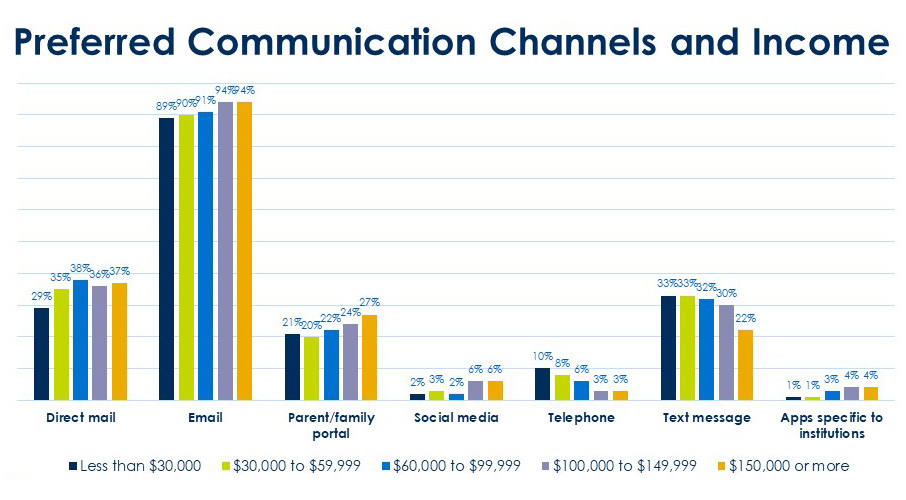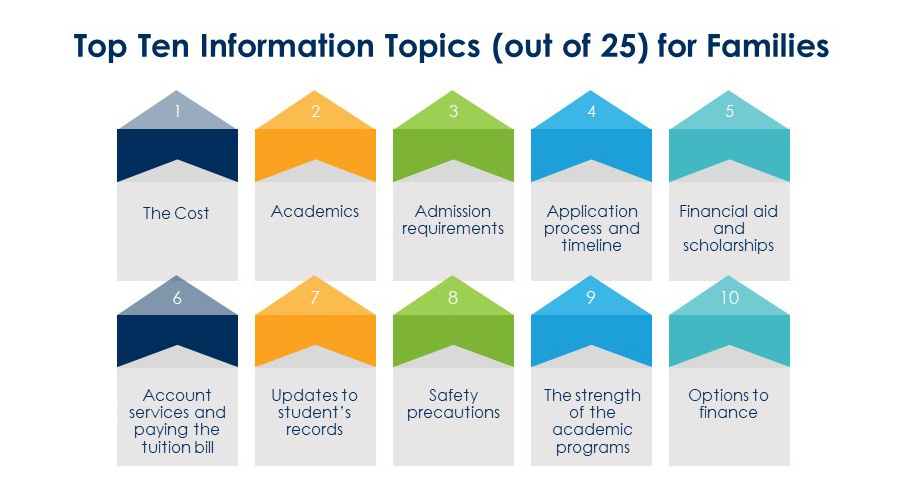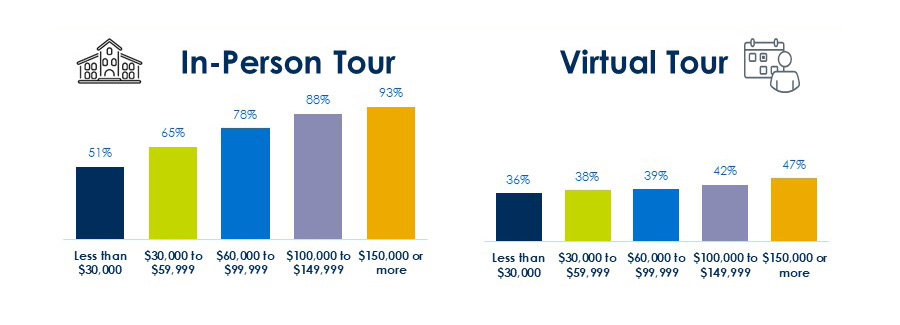enrollment
Understanding the College Planning Needs and Perceptions of Low-Income Families
This blog was co-written with Dan Preston.

There is continuing interest in the experiences of students from low-income families regarding college access, attendance, completion and success, and financial stability. Studies such as the World Economic Forum’s 2018 report found that it can take upwards of five generations for those born in low-income families in the United States to approach the mean family income. Older studies have supported the notion that a child’s economic position is influenced by the economic position of their parents.
A 2018 report from the National Center for Educational Statistics showed that for every year between 2000 and 2016, the immediate college enrollment rate for students from high-income families (83 percent in 2016) was higher than the college enrollment rates for students from middle income (64 percent) and low-income families (67 percent). The gap for low-income students had reduced during that span but still remained 16 percent lower in 2016.
Information about college costs and financial aid availability is one way to improve access and continue reducing the attendance gap. It’s important to ask—is the information delivered making an impact? RNL, in coordination with Ardeo Education Solutions and CampusESP, decided to investigate. We surveyed more than 12,000 families for our forthcoming 2023 Prospective Family Engagement Report, which we also explored in a related webinar.
How do families want to receive information from colleges and universities?
Why would income be related to a family’s preference for communication channels? Our survey data shows that families with incomes lower than $100,000 are more likely to prefer telephone calls and text messages.

The survey results show no difference in the families’ interest in college planning topics based on income. All families want to basically know the same information regardless of their income, ethnicity, or first-generation status.

However the differences are clear when it comes to having accessed information about those topics.
- Families with incomes under $60,000 report much higher instances of not seeing cost information than those above $150,000—48 percent versus 18 percent.
- First-generation families report a 7 percent higher rate of not seeing cost information compared to continuing-generation families
- The likelihood of not seeing the costs is much higher for families with 10th and 11th grade students than those in 12th grade—53 percent to 28 percent.
Financial aid and scholarships are among the top five factors for 84 percent for all families, and they are more likely to be important if the family is:
- Black or Hispanic
- Has a family income of less than $150,000
- First-generation families
How does income impact whether families experience in-person and virtual tours?
What about campus visits, both in-person and virtual? Is families’ participation in those related to their income in any way?
Families who reported having visited at least one campus in person by family income In fact the disparity in income levels of those who visit is stark. The in-person tour disparity makes sense, as those with more income have more financial freedom and time to visit a campus. Institutions should be concerned about the disparity in virtual visits based on income levels.

How can we help low-income families access information?
Now that we’ve learned of issues with access to information, what can we do? Families with incomes under $100,000 show some distinct differences in several areas. Here are some ideas.
- Families with less income are more likely to prefer telephone and text messages, so collect their contact information and call or text them.
- Foster personal contact, seek opportunities to connect with them one-on-one, and make it personal and friendly.
- They may not have a desk job, less likely also to have a computer at home, so provide web links that are phone-friendly, especially those requiring a sign-up
- As they are less likely to have high-speed internet in the home, have mobile-friendly and responsive websites and pages.
- Because they are less likely to prefer the parent portal and other social media, reach them more through email, texting, and multichannel communications.
- Use short videos to explain the parent portal, access to a virtual tour, signups for campus visits, and other key elements of information that you want parents to access
- Invite families to take virtual tours often and clearly explain how to access them.
- Provide easy ways to follow up with the institution after a virtual tour by texting, emailing, or including the contact information of a designated family liaison in the enrollment office.
- Consider offering bilingual tours, both in-person and virtual. Again, ensure families know they are invited and welcome to take those.
- The harder you make it for lower- and mid-income families to contact your team, the less equitable your access is!
Learn more by watching our webinar on prospective family engagement, and look for our report to be published soon. Or reach out to talk to our marketing and recruitment experts about making sure you engage parents as part of your student search campaigns.
Engage families throughout the college planning process
Parents and family members can be your biggest enrollment champions. They are the number-one influencers for prospective students. That’s why RNL Student Search to Enrollment makes parent engagement a major part of search campaigns.
Ask for a for a free walkthrough and see how you can engage students and parents at every stage of the enrollment journey.
